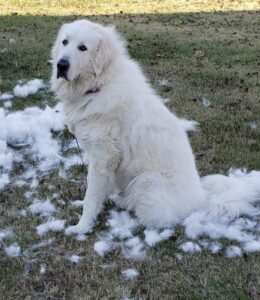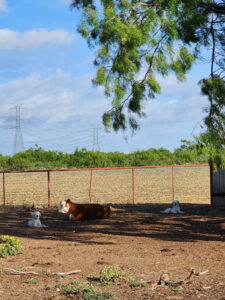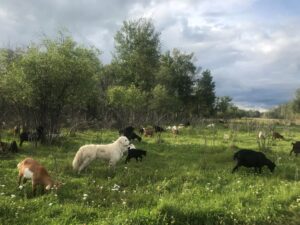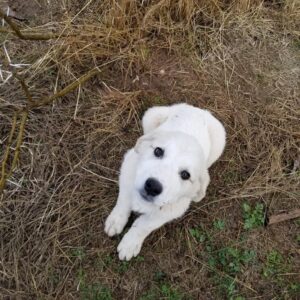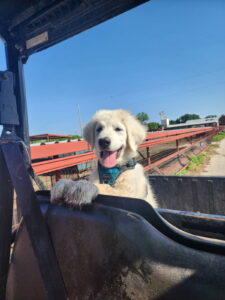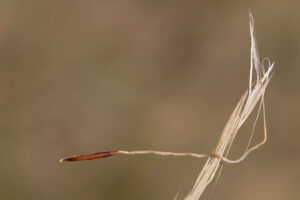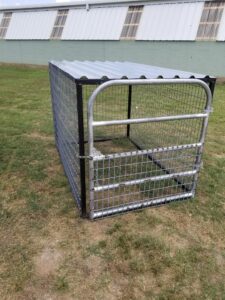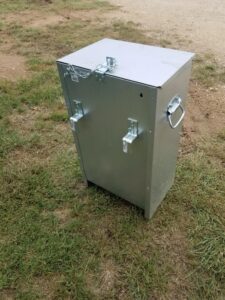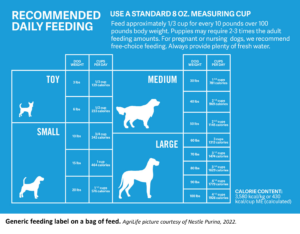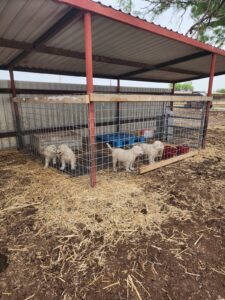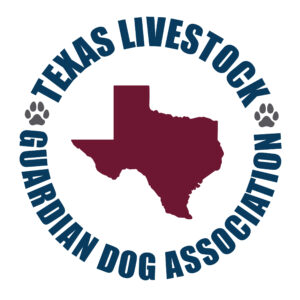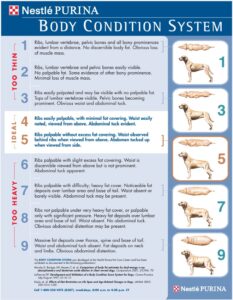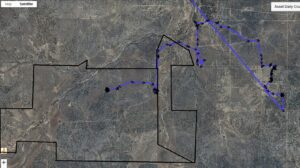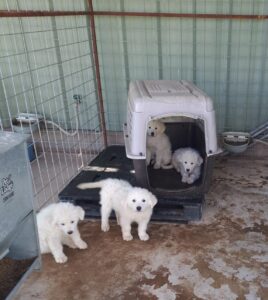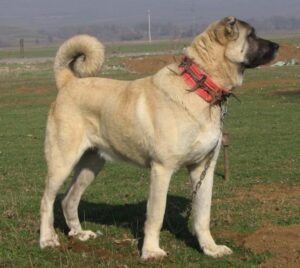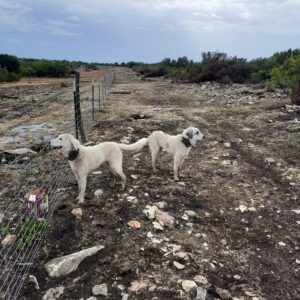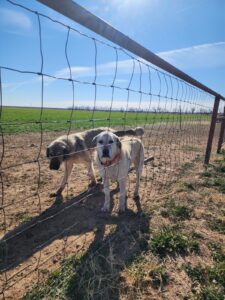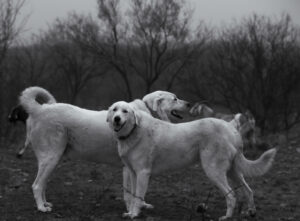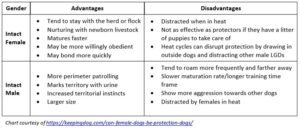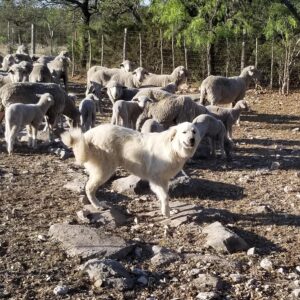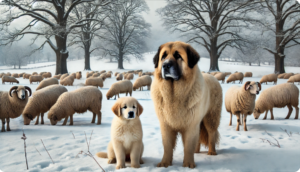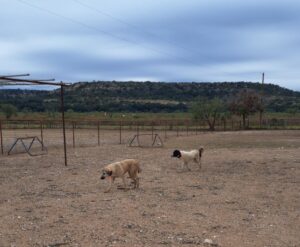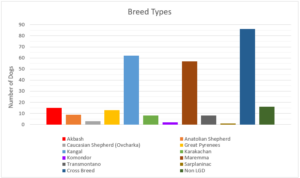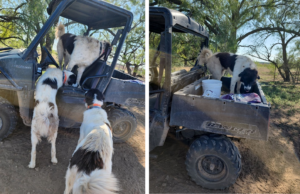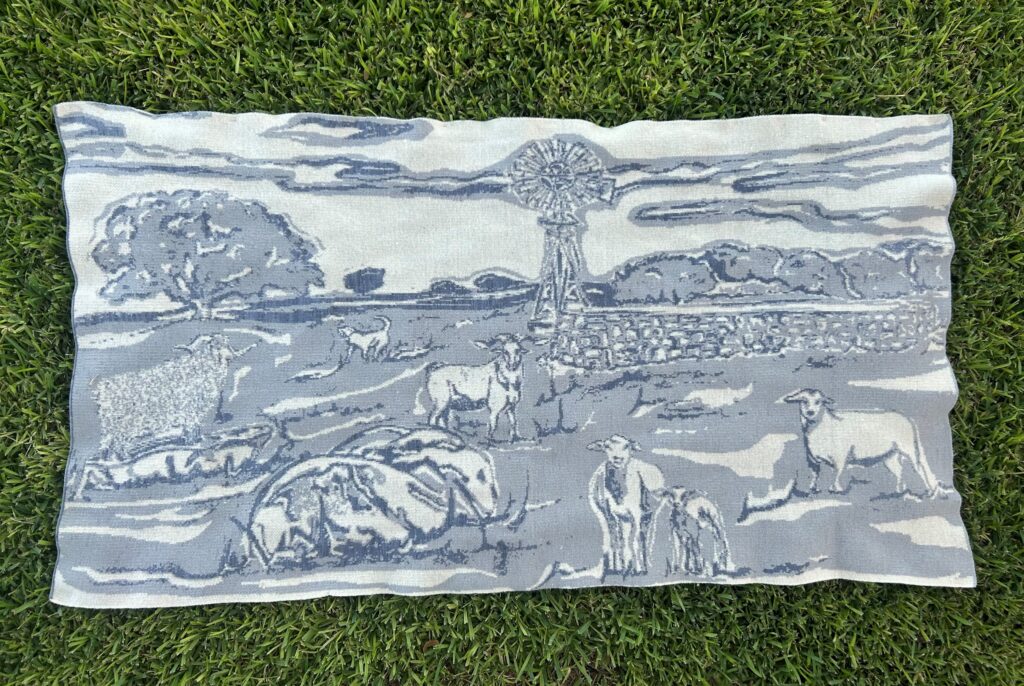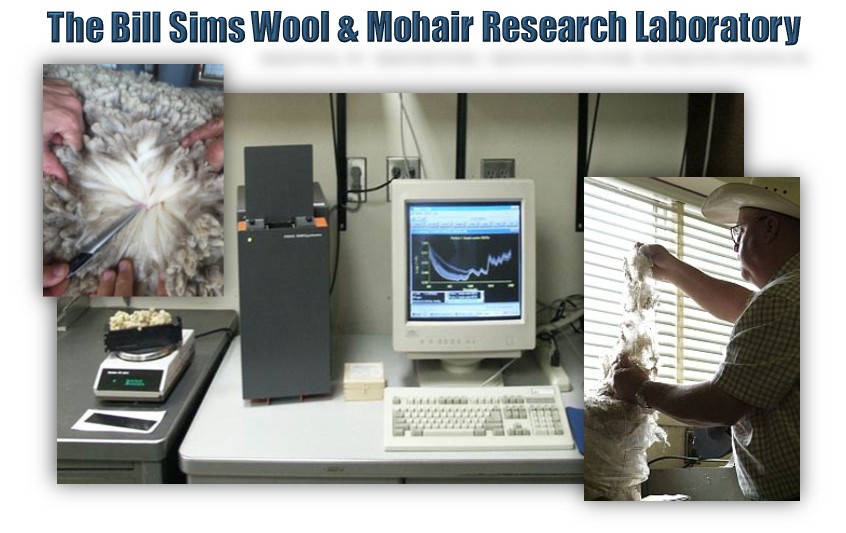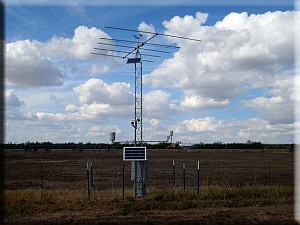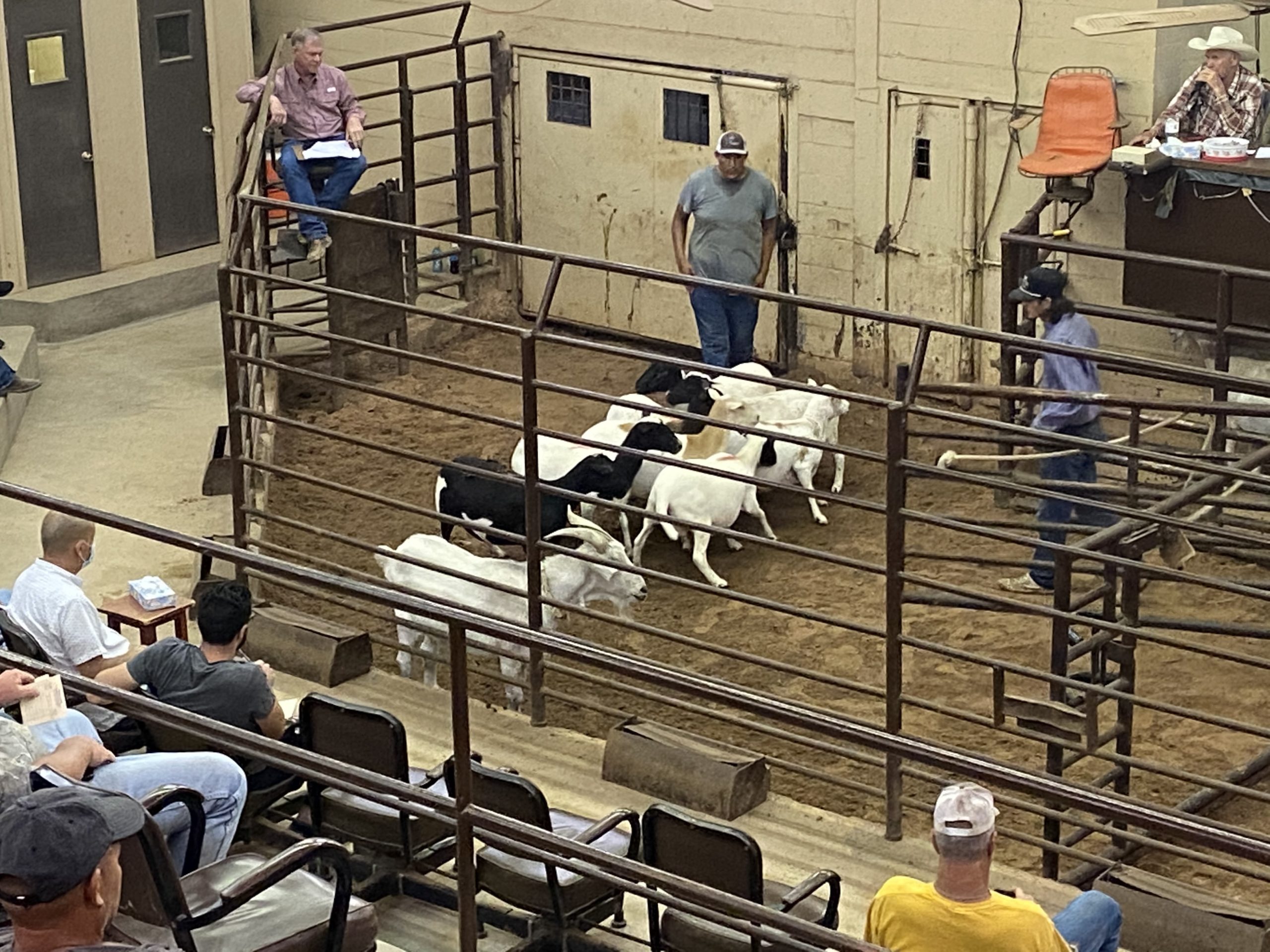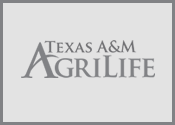
Welcome to the August edition of The Guardian Way! Well, it appears the National Weather Service was incorrect about the forecast for July being near normal precipitation! Investigations will eventually determine if cloud seeding was the cause of the intense rainfall. While I am sure most ranchers were pleased to see the extra rain last month, it also caused significant flooding and damage across the state, particularly in the Hill Country. Our prayers continue to go out to those who lost loved ones in the flooding.
I was glad to see the various rain showers at my place. I haven’t had to start supplemental feeding yet, thanks to the new grass growth. Many ranchers in my area lost hay that was cut as they were unable to bale it due to daily showers for over 14 days. The next long-range forecast for the fall shows a chance of elevated temperatures and near-normal precipitation. Maybe the next forecast will be correct! As the old saying goes, if you do not like the weather in Texas, wait an hour.
AgriLife Livestock Guardian Dog Program: Update and Events
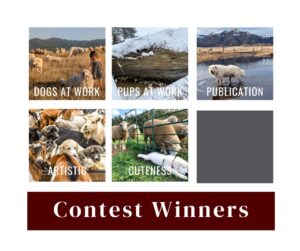 We want to thank everyone who participated in the 4th Annual AgriLife LGD Photo Contest in June. This year, we had over 470 entries for the contest. Although not a record, it was still a substantial number of photos to sort through. Our winners received GPS invisible fence collars sponsored by either SpotOn Fence or Invisible Fence Brand, and our runners-up received prizes sponsored by San Angelo Tractor Supply.
We want to thank everyone who participated in the 4th Annual AgriLife LGD Photo Contest in June. This year, we had over 470 entries for the contest. Although not a record, it was still a substantial number of photos to sort through. Our winners received GPS invisible fence collars sponsored by either SpotOn Fence or Invisible Fence Brand, and our runners-up received prizes sponsored by San Angelo Tractor Supply.
Our next webinar is scheduled for August 21st at 3:00 p.m. This quarter’s webinar will focus on the Akbash breed. Akbash dogs are a white, short-haired breed of livestock guardian dog (LGD), originally from Türkiye, and the breed is a personal favorite of mine. Kristal Spenrath, a long-time LGD breeder and co-owner of Crazy Goat Socks, will present the webinar next quarter. Check our Facebook page (@TAMUlivestockguarddog) for more information and visit the events page on the Center’s website to register as the event approaches.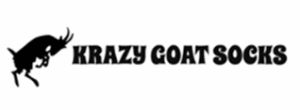
We also have Dr. Katherine Lord scheduled to present our November webinar. Dr. Lord will share data from the working dog collection of Darwin’s Ark Canine DNA Project, of which she is a member. We highly encourage all LGD owners to participate in the working dog project, helping to gather data on all types of working dog breeds. Check our Facebook page (TAMUlivestockguarddog) for more information and visit the events page on the Center’s website to register as the event approaches.
Training LGDs
Here is part three of a six-part series on training Local Guard Dogs (LGDs). Are livestock guardian dogs (LGDs) “untrainable?” This month, we will cover commands and other training that producers may want to provide for their LGD.
How Long Does Limited Obedience Training Take for LGDs?
Limited obedience training may take some time, but it should be straightforward with a consistent schedule. It all depends on how responsive the dog is to the training. Regular, consistent effort is key, and it may take several months to achieve results. We train puppies in the bonding project three times a week, for approximately 15 minutes per session.
Some commands will come more quickly to the dog than others. If a command is important, do not give up if the dog does not learn it right away. For example, a good “down” on a border collie is essential when working stock. All livestock guardian dogs can achieve a level of obedience training if a handler invests consistent time and remains patient. Remember to keep rewarding the dog, even if it seems like they have learned the command, to prevent them from reverting to an earlier stage, which can cause frustration for both the owner and the dog. When in doubt, reward them!
What Commands Should a Producer Teach to an LGD?
Although many commands could be taught to an LGD, only a few are necessary for a working dog. We believe four commands are essential for the dogs to learn:
- While the “sit” command is not that important, it becomes vital for training a dog the “stay” command. Dogs have a much easier time learning to stay when they are in a sitting position. “Sit” is one of the more straightforward teaching commands and will assist with further training.
- “Stay” is a critical command for apparent reasons. When we need a dog to stay back for their safety, a good “stay” response is vital.
-
The “come” command is the most important for an LGD. It is a powerful tool that can bring a dog back from a situation it should not be in or from danger. Mastering this command gives the owner a sense of control and the dog a sense of safety.
- A stern “NO” is a universal command that all LGDs should know to stop some behavior we do not want them to continue.
Other commands, such as “leave it” and “off,” may be considered. However, a good, stern “NO” command should work just as well to discourage unwanted behavior.
LGD Training that a Producer Should Consider
Depending on the situation, the dogs may need additional training for safety reasons. Additional training may include:
- Leash training—This may be helpful when training the dogs to manage livestock, attend vet visits, or be restrained in a vet’s office.
- Tether training – Is critical if the dogs will be near snares or traps. We recommend using it in conjunction with a GPS tracker and a geofence.
- Vehicle training – If the dog will be moved frequently with or without livestock, it should be acclimated to UTVs, trucks, and trailers.
Other Training to Consider
- Crate training will help keep a dog calm when it is being transported or needs to stay overnight at the vet’s office.
- Muzzle training is vital to lower your dog’s stress and decrease the chance of being bitten. If dogs are not thoroughly socialized or have aggressive tendencies, muzzle training is a good idea for vet visits.
Training for Behavior Problems Particular to LGDs
LGD owners often face these problems more than the average dog owner. However, if dealt with during adolescence, there are ways to minimize the problems. We will address these issues later in this article.
- Barking – to train a dog to bark less or to stop barking when asked.
- Roaming/boundary training—Hotwire in the bonding pen until the dog is 6 months old, and invisible fence collars during adolescence decrease the chance of roaming in adult dogs.
- Resource guarding — Producers should sternly correct this at first sight, or it may result in injured or dead dogs and livestock.
Training LGDs to Protect Livestock
With proper bonding and training, LGDs can protect any livestock and many other types of animals. For example, LGDs help safeguard cheetahs in Africa and penguins on islands in Australia. While LGDs most often guard ruminants, they are now frequently used to protect poultry, horses, donkeys, llamas, alpacas, and pigs. The livestock training methods in this series focus on training dogs to herd ruminants (goats, sheep, cows) and other animals such as horses, pigs, or alpacas. Training LGDs to work with poultry is different and takes more time for the dogs to get used to them. The dogs’ relationships with poultry are usually different from those with livestock; they do not tend to bond with poultry in the same way. LGDs can kill poultry if extra care is not taken during training.
Bonding Project Update
Round 7 Pups

Two of the pups from the cattle bonding project laying in a feeder to avoid the flooding in early July. AgriLife picture courtesy of Sustaita, 2025
The pups performed well in July, despite the rain and flooding. With the initial start of the month seeing 14 inches of rain fall in a day in San Angelo, the pups were smart enough to climb into the grain feeders to escape the flooding at the Center. All four pups were a little muddy for a few weeks, but they all got a bath towards the end of July to allow them to regulate their temperatures and look presentable. Their training is progressing smoothly, and we plan to release the pups from the bonding pens at the end of August into training pastures with the cattle. The pups will continue to be separated into pairs. We will track the calves and puppies using Oyster 3 GPS trackers until they are released in January 2026. The pups will also start invisible fence training upon release from the bonding pens.
In closing
If you enjoyed this monthly LGD blog, please remember to subscribe using this link: The Guardian Way | Texas A&M AgriLife Research and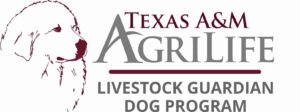 Extension Center at San Angelo.
Extension Center at San Angelo.
If you have any feedback about this article or would like to propose topics for future articles, webinars, or workshops, please contact me at bill.costanzo@ag.tamu.edu or 325-657-7311.
Are you seeking information on LGDs? Please visit our website, which features factsheets, global research on LGDs, and case studies we have conducted.
The Texas A&M AgriLife Livestock Guardian Dog Program is a collaborative initiative between Texas A&M AgriLife and the Texas Sheep and Goat Predator Management Board. Follow us on our social media platforms and share them with your friends and family!
Facebook, Instagram, YouTube: TAMUlivestockguarddog
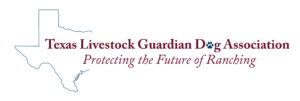 Be sure to visit the Texas LGD Association online! You can follow the organization on Facebook or YouTube under @TexasLGDAssociation or visit its website.
Be sure to visit the Texas LGD Association online! You can follow the organization on Facebook or YouTube under @TexasLGDAssociation or visit its website.
Texas A&M AgriLife provides equal opportunities in its programs and employment to all persons, regardless of race, color, sex, religion, national origin, disability, age, genetic information, veteran status, sexual orientation, or gender identity. The Texas A&M University System, U.S. Department of Agriculture, and the County Commissioners Courts of Texas Cooperating.



